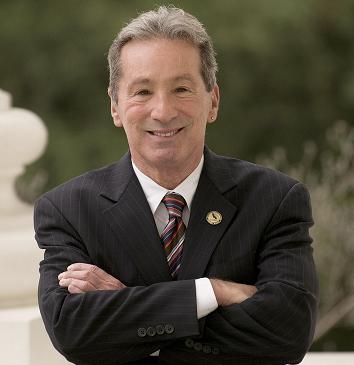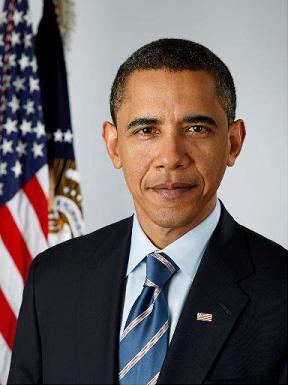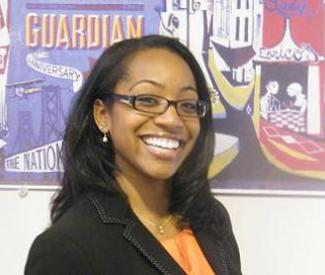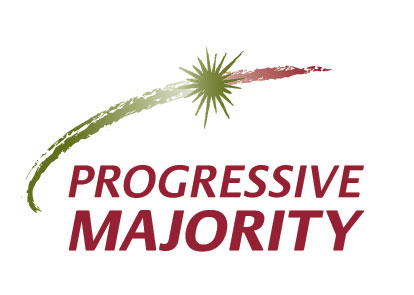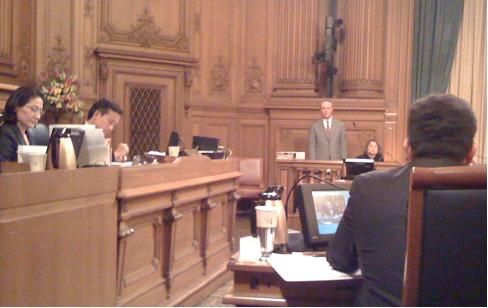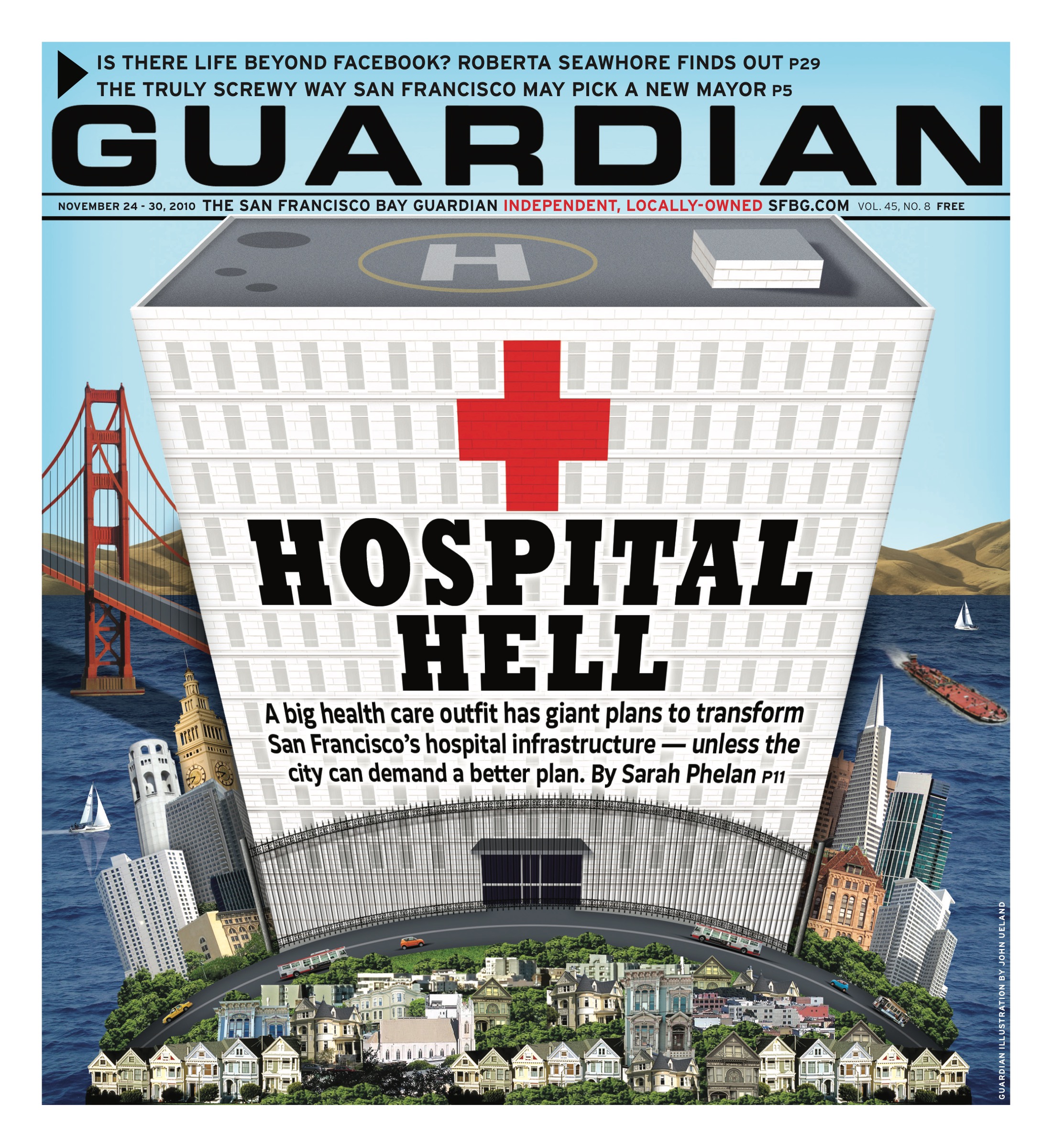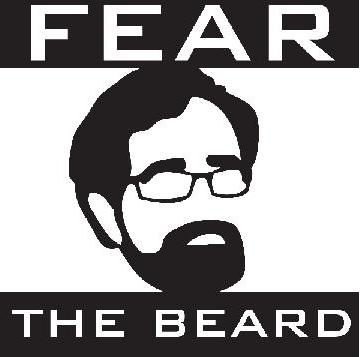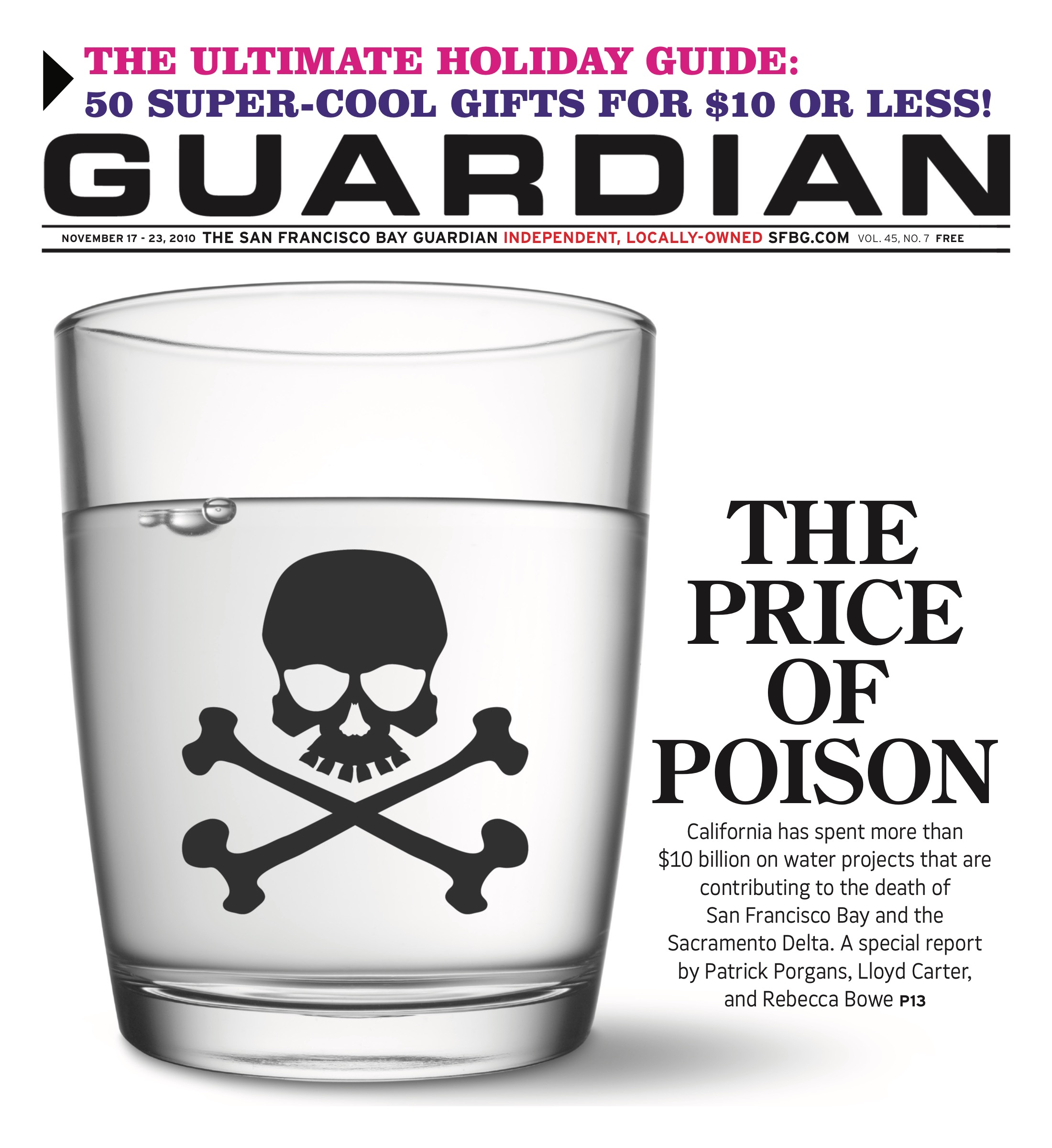Music listings are compiled by Cheryl Eddy. Since club life is unpredictable, it’s a good idea to call ahead to confirm bookings and hours. Prices are listed when provided to us. Submit items for the listings at listings@sfbg.com. For further information on how to submit items for the listings, see Picks.
WEDNESDAY 1
ROCK/BLUES/HIP-HOP
Con Brio, Astral Force Elbo Room. 9pm, $8.
“Dweezil Zappa Plays Zappa” Warfield. 8pm, $44.50-89.50.
Fancy Dan Band, Erin Brazill and the Brazillionaires, Sioux City Kid Bottom of the Hill. 9pm, $8.
Keith Crossan Big Band Biscuits and Blues. 8 and 10pm, $15.
New Up, Bernadette, Crackerjack Highway, M80 Mailbox, DJ Jack Frost Independent. 8pm, $14. Benefit for Blue Bear School of Music.
Phantom Kicks, Actors, Sunbeam Rd Rickshaw Stop. 8pm, $10.
“Silicon Valley Rocks: A Benefit For Music in Schools Today” Great American Music Hall. 7pm, $45-75.
FOLK/WORLD/COUNTRY
Good for the Jews Café Du Nord. 8pm, $15.
DANCE CLUBS
Booty Call Q-Bar, 456 Castro, SF; www.bootycallwednesdays.com. 9pm. Juanita Moore hosts this dance party, featuring DJ Robot Hustle.
Cannonball Beauty Bar. 10pm, free. Rock, indie, and nu-disco with DJ White Mike.
Hands Down! Bar on Church. 9pm, free. With DJs Claksaarb, Mykill, and guests spinning indie, electro, house, and bangers.
Jam Fresh Wednesdays Vessel, 85 Campton, SF; (415) 433-8585. 9:30pm, free. With DJs Slick D, Chris Clouse, Rich Era, Don Lynch, and more spinning top40, mashups, hip hop, and remixes.
Mary-Go-Round Lookout, 3600 16th St, SF; (415) 431-0306. 10pm, $5. A weekly drag show with hosts Cookie Dough, Pollo Del Mar, and Suppositori Spelling.
Neighborhood 111 Minna. 9pm, free. With Hot Tub, Man/Miracle, Spirit Spout, King Most, Dnae Beats, Shlohmo, and more.
Red Wine Social Triple Crown. 5:30-9:30pm, free. DJ TophOne and guests spin outernational funk and get drunk.
Respect Wednesdays End Up. 10pm, $5. Rotating DJs Daddy Rolo, Young Fyah, Irie Dole, I-Vier, Sake One, Serg, and more spinning reggae, dancehall, roots, lovers rock, and mash ups.
Synchronize Il Pirata, 2007 16th St, SF; (415) 626-2626. 10pm, free. Psychedelic dance music with DJs Helios, Gatto Matto, Psy Lotus, Intergalactoid, and guests.
THURSDAY 2
ROCK/BLUES/HIP-HOP
Brothers Comatose, Jugtown Pirates, Human Condition Slim’s. 8pm, $13.
Burial, Vaccuum, No Statik, Torture Unit Kimo’s. 9pm, $7.
Big Bad Daddy Cade Biscuits and Blues. 8 and 10pm, $16. BB King tribute.
French Miami, Horns of Happiness, Teenage Sweater Hemlock Tavern. 9pm, $7.
Mister Heavenly Café Du Nord. 9pm, $12.
Moccretro, Havarti Party, Tarantula Tango, Rival Parties, Family Matters Stud. 7pm, free.
Elliot Randall and the Deadmen, Victoria George, Tiny Television Independent. 8pm, $14.
JAZZ/NEW MUSIC
“Hellkats Holiday Bash” DNA Lounge. 7pm, $13. With Jazz Mafia All-Stars and Hubba Hubba Revue. Benefit for Jennifer “Jersey” Mitti.
Mighty Diamonds Yoshi’s San Francisco. 10:30pm, $22.
Alex Pinto Revolution Café, 3248 22nd St, SF; (415) 642-0474. 8:45pm, free.
Al Stewart Yoshi’s San Francisco. 8pm, $25.
FOLK/WORLD/COUNTRY
Annie Bacon’s Folk Opera, Audiafauna, Seedy Naturalists Swedish American Hall (upstairs from Café Du Nord). 8pm, $15. Benefit for the Liberation Institute.
Bryan Byrnes Socha Café, 3235 Mission, SF; (415) 643-6848. 8pm, free.
Chelle and Friends Coda. 9pm, $10.
Knuckle Knockers Atlas Café. 8pm, free.
My Peoples, B Foundation, La Muñueca y Los Muertos Bottom of the Hill. 9pm, $12.
DANCE CLUBS
Afrolicious Elbo Room. 9:30pm, $10. DJs Pleasuremaker and Señor Oz, with guest Nickodemus, spin Afrobeat, tropicália, electro, samba, and funk.
Caribbean Connection Little Baobab, 3388 19th St, SF; (415) 643-3558. 10pm, $3. DJ Stevie B and guests spin reggae, soca, zouk, reggaetón, and more.
Club Jammies Edinburgh Castle. 10pm, free. DJs EBERrad and White Mice spinning reggae, punk, dub, and post punk.
Drop the Pressure Underground SF. 6-10pm, free. Electro, house, and datafunk highlight this weekly happy hour.
Electric Feel Lookout, 3600 16th St, SF; www.fringesf.com. 9pm, $2. Indie music video dance party with subOctave and Blondie K.
Good Foot Som., 2925 16th St, SF; (415) 558-8521. 10pm, free. With DJs spinning R&B, Hip hop, classics, and soul.
Guilty Pleasures Gestalt, 3159 16th St, SF; (415) 560-0137. 9:30pm, free. DJ TophZilla, Rob Metal, DJ Stef, and Disco-D spin punk, metal, electro-funk, and 80s.
Holy Thursday Underground SF. 10pm, $5. Bay Area electronic hip hop producers showcase their cutting edge styles monthly.
Jivin’ Dirty Disco Butter, 354 11th St., SF; (415) 863-5964. 8pm, free. With DJs spinning disco, funk, and classics.
Koko Puffs Koko Cocktails, 1060 Geary, SF; (415) 885-4788. 10pm, free. Dubby roots reggae and Jamaican funk from rotating DJs.
Lacquer Beauty Bar. 10pm-2am, free. DJs Mario Muse and Miss Margo bring the electro.
Mestiza Bollywood Café, 3376 19th St, SF; (415) 970-0362. 10pm, free. Showcasing progressive Latin and global beats with DJ Juan Data.
Peaches Skylark, 10pm, free. With an all female DJ line up featuring Deeandroid, Lady Fingaz, That Girl, and Umami spinning hip hop.
Popscene 330 Rich. 10pm, $10. Rotating DJs spinning indie, Britpop, electro, new wave, and post-punk.
Studio SF Triple Crown. 9pm, $5. Keeping the Disco vibe alive with authentic 70’s, 80’s, and current disco with DJs White Girl Lust, Ken Vulsion, and Sergio.
FRIDAY 3
ROCK/BLUES/HIP-HOP
Alabama Mike Biscuits and Blues. 8 and 10pm, $20.
Audio Dub, Last Ambassadors Elbo Room. 10pm, $13.
Black Witchery, Blasphemophager, Diocletian, Obeisance Thee Parkside. 9pm, $12-15.
Boney M. Nob Hill Masonic Auditorium, 1111 California, SF; www.discosf.com. 7pm, $45-135.
Congress Coda. 10pm, $10.
Diego’s Umbrella, Triple Cobra, Loyd Family Players Independent. 9pm, $12.
IRB Revolution Café, 3248 22nd St, SF; (415) 642-0474. 8:45pm, free.
K-Holes, Wax Idols, Stickers Hemlock Tavern. 9:30pm, $7.
Midnight Chaser, Bastard, Vanishing Breed Kimo’s. 10pm, $7.
Eddie Money Rrazz Room. 7 and 9:30pm, $45-50.
“Popscene Presents Chicago vs. San Francisco” Rickshaw Stop. 9pm, $10. With Hey Champ, Butterfly Bones, and Moneypenny, plus DJ sets by Team Bayside High and Aaron Axelsen.
“Secret House Party with People Under the Stairs” Slim’s. 9pm, $19. With DJ Day.
Sistas in the Pit, Cleve-Land, MILF, Ani DiFranco’s Dick 111 Minna. 9:30pm. Benefit for Todd “Spor Virus” Smith.
JAZZ/NEW MUSIC
Mike Stern Band Yoshi’s San Francisco. 8 and 10pm, $18-26.
FOLK/WORLD/COUNTRY
Cuban Cowboys, Dead Westerns, DJ Santero Bottom of the Hill. 8:30pm, $12.
Left Coast Special Socha Café, 3235 Mission, SF; (415) 643-6848. 8pm, free.
DANCE CLUBS
Braza! Som.10pm, $10. With DJs Vanka, Elan, and Caasi.
Deeper 222 Hyde, 222 Hyde, SF; (415) 345-8222. 9pm, $10. With rotating DJs spinning dubstep and techno.
Dirty Rotten Dance Party Madrone Art Bar. 9pm, $5. With DJs Morale, Kap10 Harris, and Shane King spinning electro, bootybass, crunk, swampy breaks, hyphy, rap, and party classics.
Exhale, Fridays Project One Gallery, 251 Rhode Island, SF; (415) 465-2129. 5pm, $5. Happy hour with art, fine food, and music with Vin Sol, King Most, DJ Centipede, and Shane King.
Fat Stack Fridays Koko Cocktails, 1060 Geary, SF; (415) 885-4788. 10pm, free. With rotating DJs B-Cause, Vinnie Esparza, Mr. Robinson, Toph One, and Slopoke.
Fubar Fridays Butter, 354 11th St., SF; (415) 863-5964. 6pm, $5. With DJs spinning retro mashup remixes.
Germany Calling Cat Club. 9:30pm, $6. German goth and industrial with DJs Tomas Diablo, Joe Radio, Xander, and Unit 77.
Good Life Fridays Apartment 24, 440 Broadway, SF; (415) 989-3434. 10pm, $10. With DJ Brian spinning hip hop, mashups, and top 40.
Hot Chocolate Milk. 9pm, $5. With DJs Big Fat Frog, Chardmo, DuseRock, and more spinning old and new school funk.
Mighty’s 7-Year Anniversary Mighty. 9pm, $7. With DJ Shortkut, Derek Hena, Motion Potion, Syd Gris, DJ Platurn, and more.
Rockabilly Fridays Jay N Bee Club, 2736 20th St, SF; (415) 824-4190. 9pm, free. With DJs Rockin’ Raul, Oakie Oran, Sergio Iglesias, and Tanoa “Samoa Boy” spinning 50s and 60s Doo Wop, Rockabilly, Bop, Jive, and more.
Some Thing Stud. 10pm, $7. VivvyAnne Forevermore, Glamamore, and DJ Down-E give you fierce drag shows and afterhours dancing.
Strangelove Cat Club, 1190 Folsom, SF; (415) 703-8965. 9:30pm, $6. With DJs Tomas Diablo, Melting Girl, Sage, and Daniel Skellington spinning goth and industrial.
Vintage Orson, 508 Fourth St, SF; (415) 777-1508. 5:30-11pm, free. DJ TophOne and guest spin jazzy beats for cocktalians.
SATURDAY 4
ROCK/BLUES/HIP-HOP
Chris Cain Biscuits and Blues. 8 and 10pm, $20.
John Enghauser, Fat Opie, Beautiful Losers Hotel Utah. 10pm, $10.
I-80s Revolution Café, 3248 22nd St, SF; (415) 642-0474. 8:45pm, free.
Marco Benevento Trio Independent. 9pm, $20.
Maus Haus, Fol Chen, Brent Amaker and the Rodeo, Exrays, Epicsauce DJs Bottom of the Hill. 9pm, $12.
Eddie Money Rrazz Room. 7 and 9:30pm, $45-50.
Mumlers, Sic Alps, Big Eagle, Bart Davenport Rickshaw Stop. 8pm, $10-15. Benefit for Akassia Mann, mother of Big Eagle’s Robyn Miller.
Tropical Sleep, Midnite Snaxxx, Bitter Honeys Hemlock Tavern. 9:30pm, $6.
Walken, Huntress, Dark Black Bender’s, 806 S. Van Ness, SF; www.bendersbar.com. 9:30pm, $5.
“We’re Number Fun! Bay Area Derby Girls Prom and Awards Ceremony” Thee Parkside. 9pm, $15.
Yung Mars, Elevaters Café Du Nord. 9:30pm, $12.
JAZZ/NEW MUSIC
Bad Plus Herbst Theatre, 401 Van Ness, SF; www.sfperformances.org. 8pm, $20-50.
Lori Carsillo Coda. 7pm, $5.
Nancy Coleman Socha Café, 3235 Mission, SF; (415) 643-6848. 8pm, free.
Mike Stern Band Yoshi’s San Francisco. 8 and 10pm, $26.
FOLK/WORLD/COUNTRY
“Abjeez: Live in San Francisco” Hemlock Tavern. 8pm, $40.
Jean Marie Paxton Gate, 824 Valencia, SF; (415) 824-1872. 7pm, free.
Rock Soup Ramblers Café Royale, 800 Post, SF; (415) 641-6033. 8pm, free.
Craig Ventresco and Meredith Axelrod Atlas Café. 4pm, free.
DANCE CLUBS
Bar on Church 9pm. Rotating DJs Foxxee, Joseph Lee, Zhaldee, Mark Andrus, and Nuxx.
Debaser Knockout. 11pm, $5. Wear your flannel and get in free before 11pm to this party, where DJ Jamie Jams and Emdee play alternative hits from the 1990s.
Everlasting Bass 330 Ritch. 10pm, $5-10. Bay Area Sistah Sound presents this party, with DJs Zita and Pam the Funkstress spinning hip-hop, soul, funk, reggae, dancehall, and club classics. Fire Corner Koko Cocktails, 1060 Geary, SF; (415) 885-4788. 9:30pm, free. Rare and outrageous ska, rocksteady, and reggae vinyl with Revival Sound System and guests. Foundation Som., 2925 16th St., SF; (415) 558-8521. 10pm.
Gemini Disco Underground SF. 10pm, $5. Disco with DJ Derrick Love and Nicky B. spinning deep disco.
HYP Club Eight, 1151 Folsom, SF; www.eightsf.com. 10pm, free. Gay and lesbian hip hop party, featuring DJs spinning the newest in the top 40s hip hop and hyphy.
Kontrol Endup. 10pm, $20. With resident DJs Alland Byallo, Craig Kuna, Sammy D, and Nikola Baytala spinning minimal techno and avant house.
New Wave City: Depeche Mode Tribute DNA Lounge. 9pm, $7-12. Eighties with DJs Skip, Shindog, and Melting Girl.
Rock City Butter, 354 11th St., SF; (415) 863-5964. 6pm, $5 after 10pm. With DJs spinning party rock.
Saturday Night Soul Party Elbo Room. 10pm, $10. With DJs Lucky, Phengren Oswald, and Paul Paul spinning 60s soul.
Souf Club Six. 9pm, $7. With DJs Jeanine Da Feen, Motive, and Bozak spinning southern crunk, bounce, hip hop, and reggaeton.
Soundscape Vortex Room, 1082 Howard, SF; www.myspace.com/thevortexroom. With DJs C3PLOS, Brighton Russ, and Nick Waterhouse spinning Soul jazz, boogaloo, hammond grooves, and more.
Spirit Fingers Sessions 330 Ritch. 9pm, free. With DJ Morse Code and live guest performances.
SUNDAY 5
ROCK/BLUES/HIP-HOP
Casiotone for the Painfully Alone, Donkeys, Ian Fayes Bottom of the Hill. 9pm, $12.
Tommy Castro Biscuits and Blues. 8 and 10pm, $20.
Epica, Scar Symmetry, Agonist, Blackguard DNA Lounge. 6:30pm, $23.
Courtney James Revolution Café, 3248 22nd St, SF; (415) 642-0474. 8:45pm, free.
Posies, Brendan Benson, Aqueduct Independent. 8pm, $20.
Radiators, Battlehooch Slim’s. 8pm, $25.
Desirea Rodgers Rrazz Room. 3pm, $25.
Jonathan Richman, Tommy Larkins, Gail Davies Great American Music Hall. 8pm, $15.
JAZZ/NEW MUSIC
Kay Kostopoulos Bliss Bar, 4026 24th St, SF; (415) 826-6200. 4:30pm, $10.
Mike Stern Band Yoshi’s San Francisco. 5pm, $5-26.
FOLK/WORLD/COUNTRY
Grooming the Crow, Everheart Thee Parkside. 4pm, free.
DANCE CLUBS
Afterglow Nickies, 466 Haight, SF; (415) 255-0300. An evening of mellow electronics with resident DJs Matt Wilder, Mike Perry, Greg Bird, and guests.
DJ Anthony Atlas Hemlock Tavern. 9pm, free.
Call In Sick Skylark. 9pm, free. DJs Animal and I Will spin danceable hip-hop.
DiscoFunk Mashups Cat Club. 10pm, free. House and 70’s music.
Dub Mission Elbo Room. 9pm, $6. Dub, dubstep, roots, and dancehall with DJ Sep, Vinnie Esparza, and guest B-Love.
Gloss Sundays Trigger, 2344 Market, SF; (415) 551-CLUB. 7pm. With DJ Hawthorne spinning house, funk, soul, retro, and disco.
Honey Soundsystem Paradise Lounge. 8pm-2am. “Dance floor for dancers – sound system for lovers.” Got that?
Kick It Bar on Church. 9pm. Hip-hop with DJ Zax.
Pachanga! Coda. 5pm, $10. Salsa with Jesus Diaz y su QBA.
Religion Bar on Church. 3pm. With DJ Nikita.
Swing Out Sundays Rock-It Room. 7pm, free (dance lessons $15). DJ BeBop Burnie spins 20s through 50s swing, jive, and more.
MONDAY 6
ROCK/BLUES/HIP-HOP
Abyssinians, Native Elements, Revival Sound System Independent. 9pm, $20.
Chris Duarte Biscuits and Blues. 8 and 10pm, $15.
Mrt. St. Helens Vietnam Band, Globes Rickshaw Stop. 8pm, $12.
Western States Motel, Maren Parusel, Ash Reiter Hemlock Tavern. 6pm, $6.
DANCE CLUBS
Black Gold Koko Cocktails, 1060 Geary, SF; (415) 885-4788. 10pm-2am, free. Senator Soul spins Detroit soul, Motown, New Orleans R&B, and more — all on 45!
Death Guild DNA Lounge. 9:30pm, $3-5. Gothic, industrial, and synthpop with Decay, Joe Radio, and Melting Girl.
Krazy Mondays Beauty Bar. 10pm, free. With DJs Ant-1, $ir-Tipp, Ruby Red I, Lo, and Gelo spinning hip hop.
M.O.M. Madrone Art Bar. 6pm, free. With DJ Gordo Cabeza and guests playing all Motown every Monday.
Manic Mondays Bar on Church. 9pm. Drink 80-cent cosmos with Djs Mark Andrus and Dangerous Dan.
Musik for Your Teeth Revolution Café, 3248 22nd St., SF; (415) 642-0474. 5pm, free. Soul cookin’ happy hour tunes with DJ Antonino Musco.
Network Mondays Azul Lounge, One Tillman Pl, SF; www.inhousetalent.com. 9pm, $5. Hip-hop, R&B, and spoken word open mic, plus featured performers.
Skylarking Skylark. 10pm, free. With resident DJs I & I Vibration, Beatnok, and Mr. Lucky and weekly guest DJs.
TUESDAY 7
ROCK/BLUES/HIP-HOP
Bedouin Soundclash, Moneybrother, Los Hot Boxers Slim’s. 8pm, $15.
Conspiracy of Beards, Ruby Howl, Gilded Hooks Café Du Nord. 8:30pm, $10.
Delta Spirit, Fling, Darker My Love Fillmore. 8pm, $18.50.
Chris Duarte Biscuits and Blues. 8 and 10pm, $15.
Gay Blades, Girls With Guns, Go-Going-Gone Girls Bottom of the Hill. 9pm, $10.
Gracious Few, Danielle Barbe, Reckless in Vegas Independent. 8pm, $10.
DANCE CLUBS
Brazilian Party Night Elbo Room. 9pm, $5. Brazilian dance hits, samba, funk, and more with DJ Dion and DJ Kwala.
Eclectic Company Skylark, 9pm, free. DJs Tones and Jaybee spin old school hip hop, bass, dub, glitch, and electro.
Share the Love Trigger, 2344 Market, SF; (415) 551-CLUB. 5pm, free. With DJ Pam Hubbuck spinning house.
Womanizer Bar on Church. 9pm. With DJ Nuxx.

